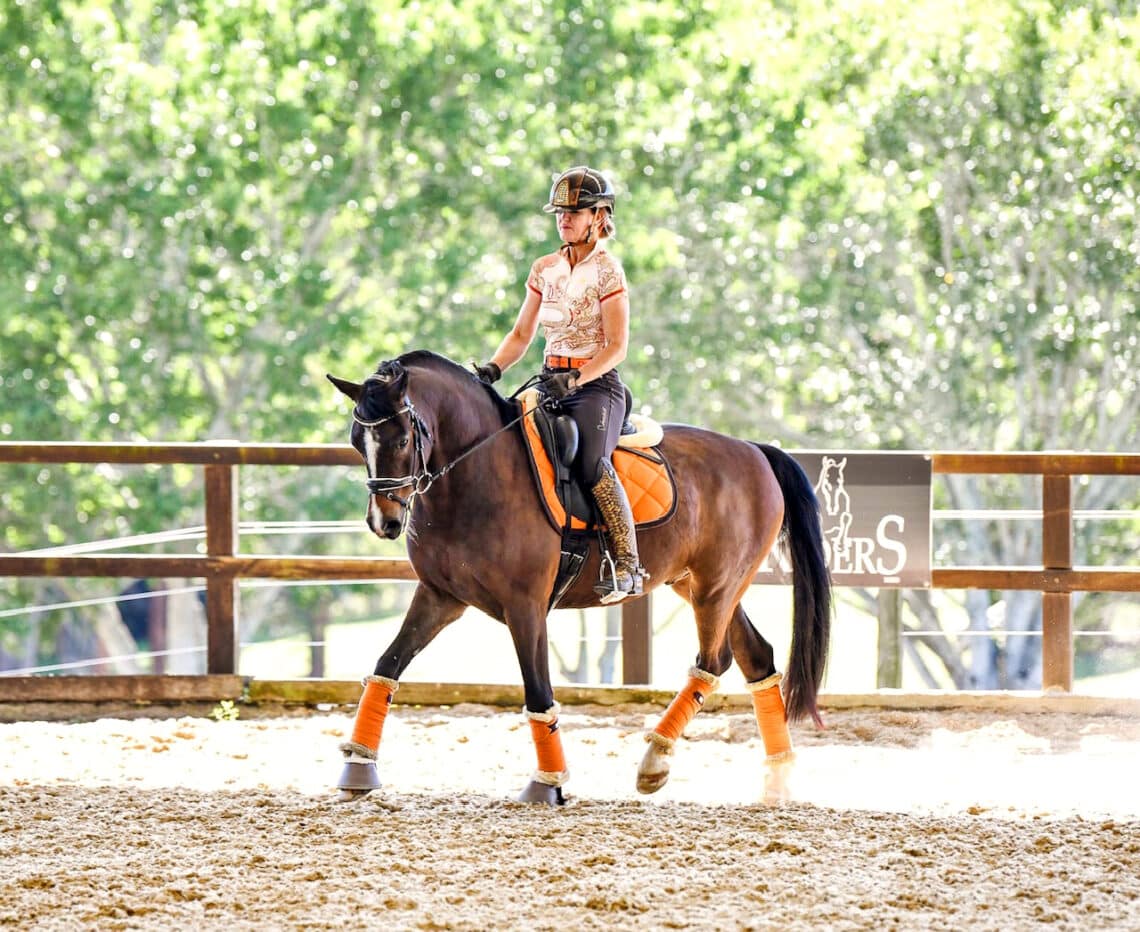
Back to basics
This is the first of a not to be missed five-part series in which NICOLE TOUGH looks at a horse’s training as they progress through the dressage grades.
Ever heard the expression ‘back to basics’? Basics is such a misleading word, because it implies something easy and uncomplicated, and our dressage basics are far from uncomplicated. Visiting international clinicians and judges often see horses who are inconsistent in the rhythm, stiff or crooked to one side, and not working over the back in self-carriage. These all point to weaknesses in basic training.
For dressage riders, consolidating the basics means cementing an essential foundation for higher schooling. It is creating the base of a pyramid that we can add layers to as we work towards the pyramid’s peak: Grand Prix. So, where do the basics start and what do they look like?
Horses are usually started at three years of age. This could be likened to kindergarten, where our horses learn to accept a rider on their back and to acknowledge them as their leader in the simple commands: go, stop, turn left and turn right. From kindergarten, they hopefully graduate to primary school, where the dressage trainer introduces the basics. For humans, these basics include learning the sounds of the alphabet, simple arithmetic and starting to read and write. For our horses, the basics include concepts like rhythm, suppleness and contact, which should take eight to twelve months to consolidate. These training foundations are then examined by the judges in preliminary and four-year-old dressage tests.
From here, humans graduate to Years 2 and 3, where they learn more complicated words and mathematics; whilst for our horses, we add the beginnings of yielding to the leg, and start training push and carry through some lengthening and shortening of the steps. At this point, still in primary school, our horse’s understanding of push/carry is examined in novice dressage tests.
Over the years, whenever an international trainer came to our shores and I was lucky enough to sit-in, watching, listening and having lessons myself, it intrigued me how many times the trainer would go ‘back to basics’, instead of working on the tempi changes, or the half-passes, or the piaffe as the rider wanted. Turns out, maybe the basics aren’t so basic after all. Maybe they are crucial to the success of higher schooling and the key to bigger scores.
So, let’s consider these not so basic basics, and how they came about. In the mid-80s, the Training Scale, the German recipe for success, was translated into English. This system of training is sequential, and its qualities are universally accepted and judged through a series of national and international dressage tests (exams if you like) from preliminary level through to Grand Prix.

As mentioned, the first year or two of dressage training is about consolidating the basics, and any concepts that are uncemented, misunderstood, or skipped during this crucial foundational period will be revealed in dressage tests and in later training. Indeed, it is the judges’ job to recognise, highlight and award scores based on the presence or absence of the basic qualities.
The Training Scale (our curriculum) begins with takt. Translated as rhythm, it incorporates both the tempo and the correct footfalls of the four-beat walk, two-beat trot, and three-beat canter. In the beginning, due to lack of balance and/or understanding, young horses are inclined to either slow down or speed up, detracting from the rider’s goal to maintain one regular rhythm. By concentrating on the consistency of regular footfalls, the rider can become their horse’s metronome and in so doing improve the horse’s mental and physical balance.
Next is losgelassenheit, translated as suppleness, which largely deals with the natural crookedness of the horse. Much like humans are pre-dominantly right-handed, most horses are supple through the right side of the body and stiff to the left. Bending and stretching involves the elongation (lengthening) of muscles and promotes more flexibility and suppleness. Bending promotes lateral (sideways) suppleness, and stretching promotes longitudinal (over the back) suppleness; and it is the rider’s job to ensure their horse is equally supple to the left and right, and able to dorsally flex (lift) their spine.
Which brings us to the final basic anlehnung, translated as contact. From the beginning, the horse should be trained to reach for the bit and accept contact. The bit is not there for the horse to grab, snatch, evade, or lean on, and this concept is not negotiable; horses must learn to carry the bit. When the contact is too strong and the horse is using the contact to carry some of their weight, the rider should use transitions and/or half-halts with aids that encourage the hindlegs to step under the centre of gravity, thus carrying more weight.
When the basics are understood, the rider is able to show a horse who is easily able to maintain one rhythm in all three gaits, who is supple to both sides and over the back, and accepting of contact with the bit in a self-carrying capacity. Once established, these basics are then used to warm-up and prepare the horse for more intense work in their daily sessions.



